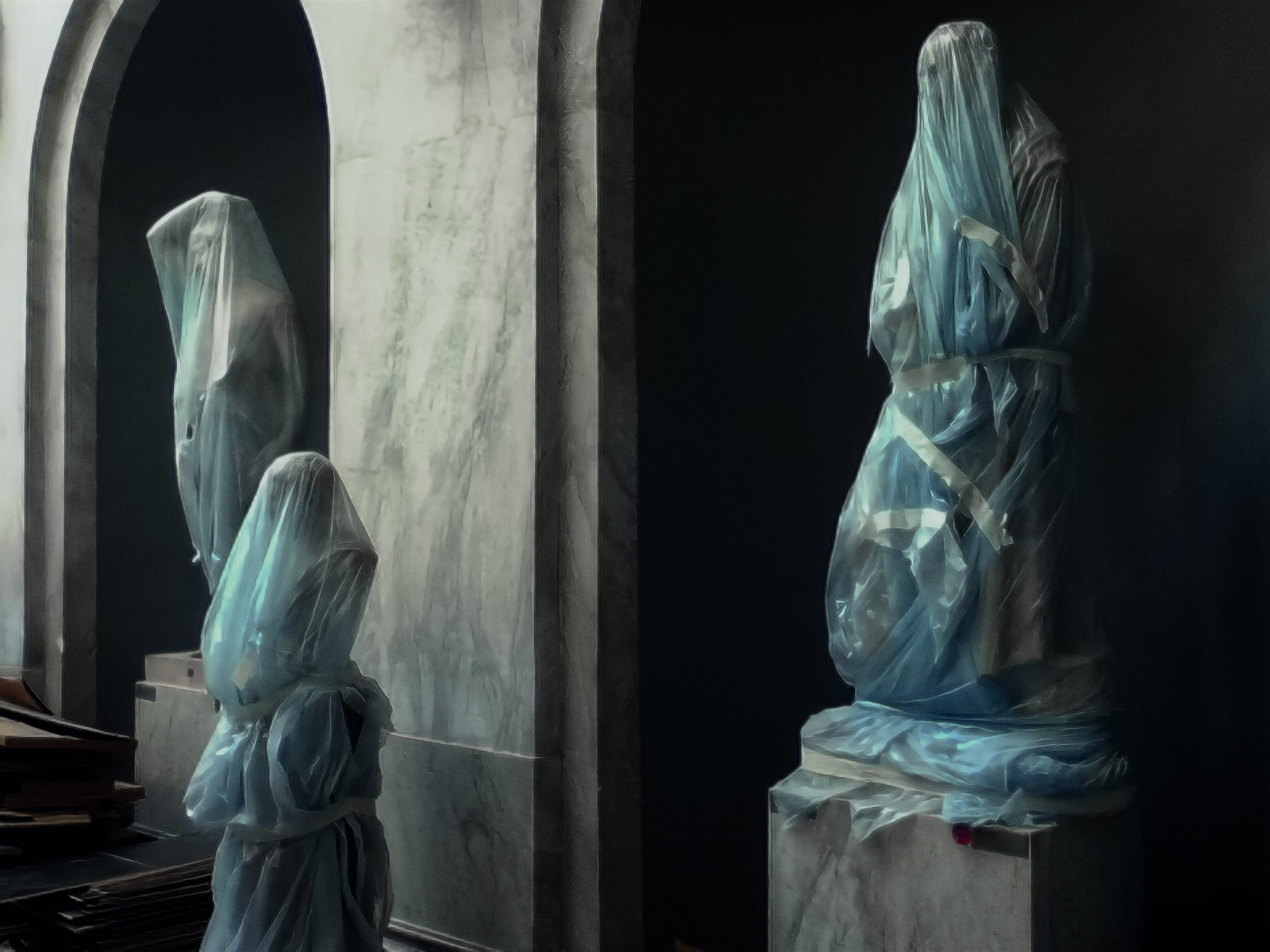
Photo by Jose Antonio
Digital Plastik
In his reading of myth, Giorgio Agamben presents it as a dispositif of power and revelation. Myth emerges as a structure that organizes the relationship between the visible and the invisible, the spoken and the unspoken, the sacred and the profane. It operates within a liminal space where ordinary categories are suspended. Marble sculptures do not merely recount stories; they institute a symbolic order: marble becomes a threshold between the human and the divine. In this sense, marble not only represents but also produces the sacred.
This image was taken in 2013 at the Vatican using a low-quality mobile device and has since been restored using artificial intelligence. The work depicts monuments wrapped in plastic, found in one of the Vatican’s halls during renovation. This gesture suspends the sculptures’ usual function and meaning, “profaning” the image—not in the sense of destroying the sacred, but of liberating it from its ritualized use. It enacts a visual play that creates an inverse dispositif: making the invisible visible by concealing the object.
The use of AI to “restore” or reveal details lost due to the poor quality of the original capture reinscribes the work within the parameters of contemporary visibility, where the image is camouflaged or blurred by the hallucinations of the digital machine. AI thus becomes a method of profaning the digital image. The limits of perception are explored without seeking technical perfection. The conceptual strategy draws a parallel between the translucent veil of plastic and the human forms behind which mythological gods were hidden. Like AI, this dispositif simultaneously conceals and reveals: a double wrapping—plastic and digital. Both materials may be ephemeral and artificial, yet they are imbued with presence. In this way, the work confronts classical beauty with the digital materiality of the present.
